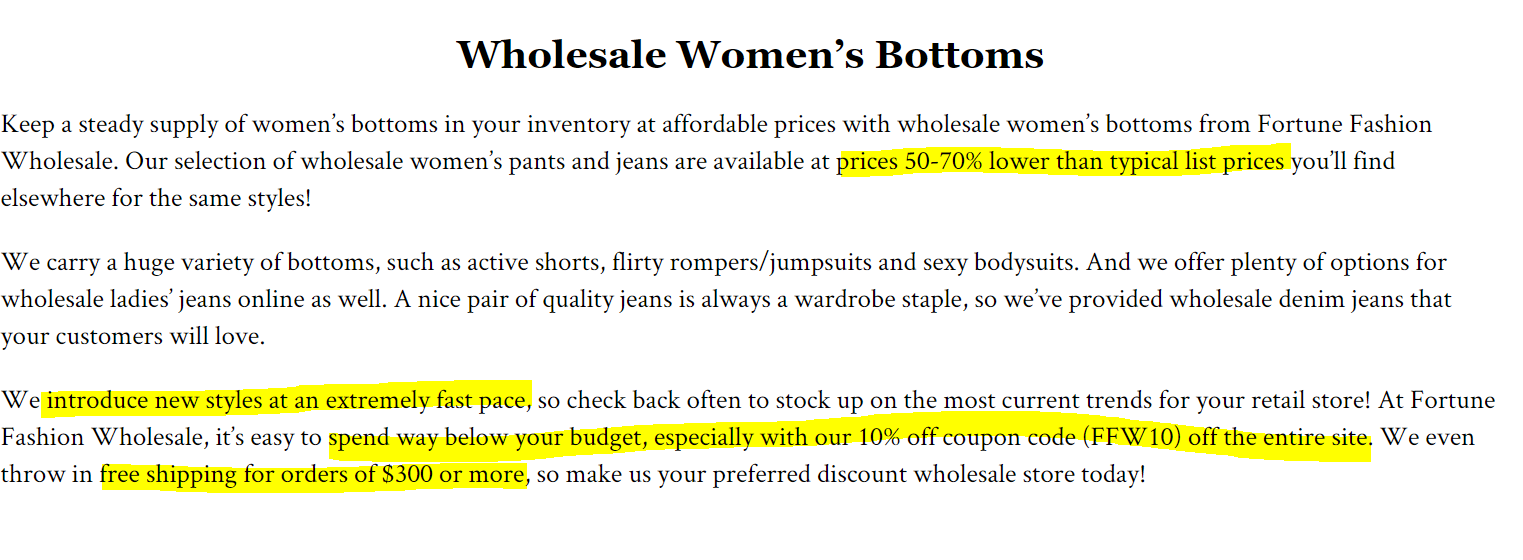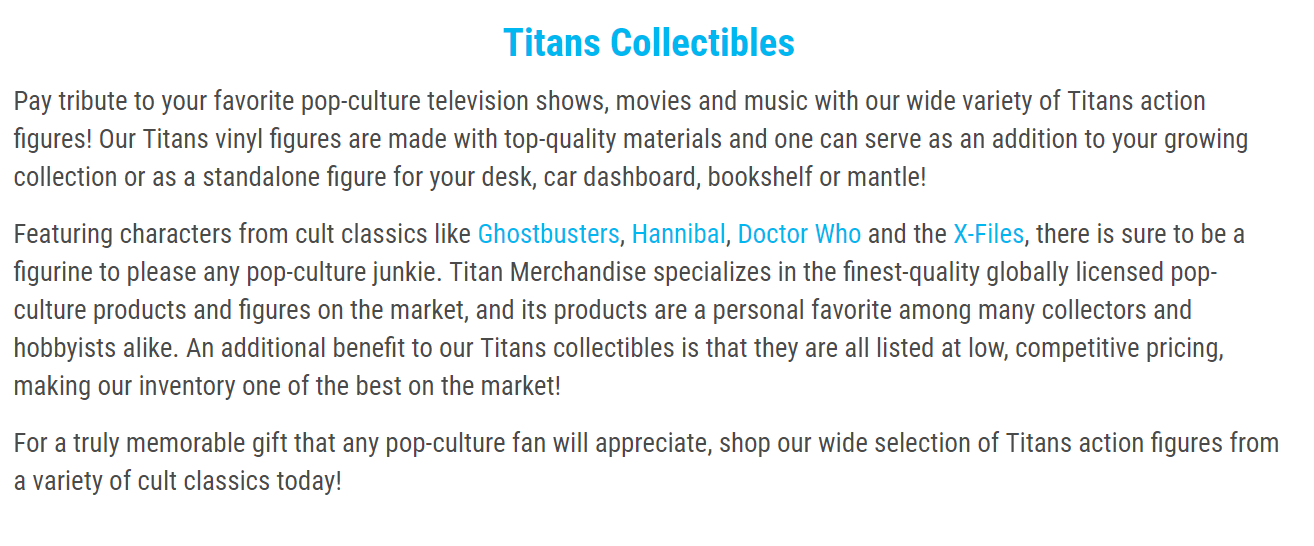
As a small business, it’s easy to get discouraged when competing against bigger brands for online exposure. When it comes to advantages, they have bigger budgets, more manpower, high brand recognition and a ton of natural backlinks – just to name a few. While these are certainly significant advantages, they are not the end-all, be-all of online marketing.
Small businesses have plenty of ways they can triumph over big businesses. You can explore niche audiences, afford to take creative risks and make quick changes without having to deal with a bunch of red tape or formal procedures. In terms of SEO, there’s also one key area of your ecommerce website you can optimize to knock big competition out of the way: category descriptions. Let’s put our focus here.
By creating category descriptions, you can target the audiences who are midway into the purchase funnel.
You may have noticed that big brands usually don’t utilize a lot of text on their websites. They opt for a clean, straightforward design and user experience, letting the products speak for themselves. However, if you’re a small ecommerce store emulating this style, you may find yourself missing out on a pretty sizable opportunity. The reason why the big guys don’t use category descriptions is simply because they don’t have to. They have reached a point of trust and visibility with customers and search engines that they can afford to make such sacrifices.
Good for them and lucky for you, because this is your opening. By creating category descriptions, you can target the audiences who are midway into the purchase funnel. This is a pivotal position where you could possibly influence a customer to move from the exploration phase to the purchase phase.
Tough Love
Create category descriptions with relevant long-tail keyword phrases instead of harping on popular short-tail keywords. We say this out of love, but you have to know where you stand. Short-tail keywords tend to have high search volumes but they’re highly competitive as well, which means big brands usually have them on lockdown. Whereas, mid- to long-tail keywords tend to have lower search volumes but are less competitive with higher conversion rates. Again, this is your opening.
For example, if you’re a small lingerie/sleepwear company optimizing a category page for silk pajamas, the last thing you want to do is target broad keywords, such as “women’s pajamas,” “silk pajamas,” or “silk PJs.” Those are for the Victoria’s Secrets of the world. By targeting longer and more specific phrases, you can reach an audience more apt to push that “Add to Cart” button. Play smart instead of playing big, and you’ll be more likely to reap the rewards.

How Can I Help You?
How often does a big box store make you feel like they really care? Not saying that it’s entirely impossible or that it never happens, but it’s rare. Many big-brand ecommerce sites lack a human element. They may be clean and pretty, but it’s hard to engage on an individual level without any context. Leverage this by writing category descriptions that set the tone and voice of your company and show how you relate to your customers. You can achieve this through the wording you use and especially the stories you tell.

Another important part of connecting with your audience through category descriptions is your ability to contribute useful information. If you promise affordable products and great deals, prove it. How much lower are your prices compared to competitors? Do you have any special discounts or promotions available? Is free shipping an option, and if so, what are the qualifications? Be prepared, and make things easy for your customers.

Lead the Way
By sprinkling some internal links to deeper subcategories or popular products in your category descriptions, you’re establishing site hierarchy and spreading valuable link juice. In other words, search engines can crawl these internal pathways and index a link structure that can help you rank higher in search results; and backlinks to these pages will lead to other pages on your site.
On the more human level, internal linking improves navigation, allowing customers to navigate to other relevant pages on your website seamlessly. It can also encourage visitors to view more pages during a single visit and even prolong their stay on your site.
Note: Keep in mind that if you’re linking to products in your category descriptions, make sure your inventory doesn’t change very often or that you have the time to update the descriptions on a consistent basis.

Show and Tell
Finally, be open to incorporating other forms of content, like videos, in addition to text. While videos on product pages are now fairly common, not many ecommerce websites (big or small) add video content to category pages. It takes a more creative approach than highlighting an individual product and, simply put, creating quality videos good enough to live on your website can cost a pretty penny. However, if you’re able to devote the time and resources necessary to create a few for your top categories, it could definitely set you apart from your competition.
On top of offering helpful information to visitors, videos can boost your search visibility even further through YouTube’s own search engine (the biggest behind Google) as well as through Google, which can pull up YouTube videos in top searches when relevant.
Note: Similar to category descriptions, you’ll also want to optimize YouTube video titles and descriptions with meaningful keywords.

When outsmarting the big guys, just look at it this way: find the holes and weaknesses in their strategy and excel at them. And we have to say, category descriptions are an easy place to start.
If you have any questions or tips of your own, please let us know in the comments below!











